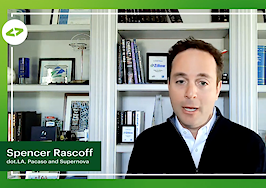A surprisingly disappointing jobs report could hold a silver lining for housing markets, giving the Federal Reserve justification to continue policies that keep a tight lid on interest rates.
But that silver lining could evaporate if employers are forced to raise wages too quickly to fill openings, sparking inflationary pressures that spook bond investors and forcing the Fed to give interest rates more room to run. In addition, housing industry leaders are anxious to see more people working in construction, as builders struggle to keep up with demand for new homes.
U.S. companies added 266,000 workers to their payrolls in April, when economists polled by Reuters had expected payrolls to grow by closer to 1 million jobs. And it turns out that only 770,000 jobs were added in March, not the 916,000 originally reported, according to the Department of Labor.
With 9.8 million people out of work, the unemployment rate stands at 6.1 percent, little changed from March. Before the pandemic, the unemployment rate was 3.5 percent.
Last week, the Federal Reserve restated its intention to keep short-term interest rates near 0 percent until unemployment falls and inflation “is on track to moderately exceed 2 percent for some time.” Perhaps more importantly for mortgage rates, the Fed said it will continue to buy at least $80 billion in Treasury securities and $40 billion in mortgage-backed securities every month “until substantial further progress has been made” toward hitting the Fed’s employment and inflation goals.
This week, Freddie Mac reported that rates on 30-year fixed-rate mortgages averaged less than 3 percent for third week in a row, a welcome respite from a steady march upward from an all-time low of 2.65 percent during the week ending Jan. 7.
The Fed’s appetite for bonds and mortgage-backed securities helps keep long-term rates down, since it makes them more scarce. Bond prices and yields move inversely, so the Fed’s purchases can push prices up and interest rates down.
When the jobs report came out, yields on 10-year Treasury notes briefly fell to a two-month low, but then rebounded. The 10-year Treasury is a useful predictor of where mortgage rates are headed, because investors have similar appetites for mortgage-backed securities.
If the economy is overheating and investors fear the Fed will raise rates, they’ll stop buying bonds and mortgage-backed securities, curtailing demand and sending interest rates up.
Ordinarily, a poor jobs report would send investors piling into bonds, sending interest rates down. But there’s some thought that employers want to hire, but are having trouble filling vacancies because workers are demanding higher pay.

Ian Shepherdson
If that’s the case, the initial rally in Treasurys today “makes no sense, because the outcome will be substantially faster wage growth” and potential risk for bondholders, said Pantheon Macroeconomics Chief Economist Ian Shepherdson in a note.
Fannie Mae Chief Economist Doug Duncan said he’s cautioning people not to overinterpret the April jobs report.
“This is one month’s data, and April is heavily dependent on seasonal factors, which COVID has distorted,” he said. “I don’t think this changes the Fed’s posture at all. If we get two or three months like this, they might say demand is stronger then growth in supply,” and start looking for signs of inflation.

Doug Duncan | Photo credit: Fannie Mae
What’s getting lost in the headlines, Duncan said, is that employment in the service sector was up substantially in April as households spend more of their discretionary income on leisure and hospitality, travel, and restaurants.
With mortgage rates, it’s important to keep in mind that last year’s rates were something of an aberration.
“If you took the full 2020 calendar year out, you would still be saying, ‘These are the lowest mortgage rates of our lifetime,’ ” Duncan said.
Unfilled job openings
According to the latest report from the National Federation of Independent Business, a record 44 percent of small businesses had job openings they couldn’t fill in April. That’s 22 percentage points higher than the 48-year historical average, and two points higher than the previous record of 42 percent in March.

Mike Frantantoni
“Recent weeks have seen increasing reports that employers are having difficulties filling open positions,” said Mike Fratantoni, the Mortgage Bankers Association’s chief economist. “We continue to expect robust job growth and housing demand through the remainder of the year, but this report suggests that the rate of improvement in the job market is going to be much less consistent than other indicators would suggest.”
At the National Association of Realtors, Chief Economist Lawrence Yun is keeping a close eye on construction employment.

Lawrence Yun | Photo credit: NAR
“The housing market is hot but could come to a halt if home prices continue to rise strongly and hurt affordability for first-time buyers,” Yun said. “That is why it is critical for homebuilding to further ramp up.”
Overall economic activity as measured by GDP is down only 1 percent from peak, while jobs are down by 5 percent, Yun noted. “This implies there is friction in the labor market with some industries going about producing more with fewer workers.”
Employment in the logging industry is still down 9 percent from pre-pandemic levels, even though lumber prices are soaring, Yun said. Despite housing shortages, there were no net job additions in construction last month, although some general contractors moved out of commercial and into residential real estate, he said.
The construction industry “is doing its best by offering higher pay,” Yun said, with weekly earnings in construction up 7.1 percent versus only 2.7 percent overall.
“Let’s ensure that workers are not hindered from getting work at lumber mills and at construction sites,” Yun said.
The U.S. Chamber of Commerce today urged Congress to end $300 weekly supplemental unemployment benefits, claiming that “The disappointing jobs report makes it clear that paying people not to work is dampening what should be a stronger jobs market.”













